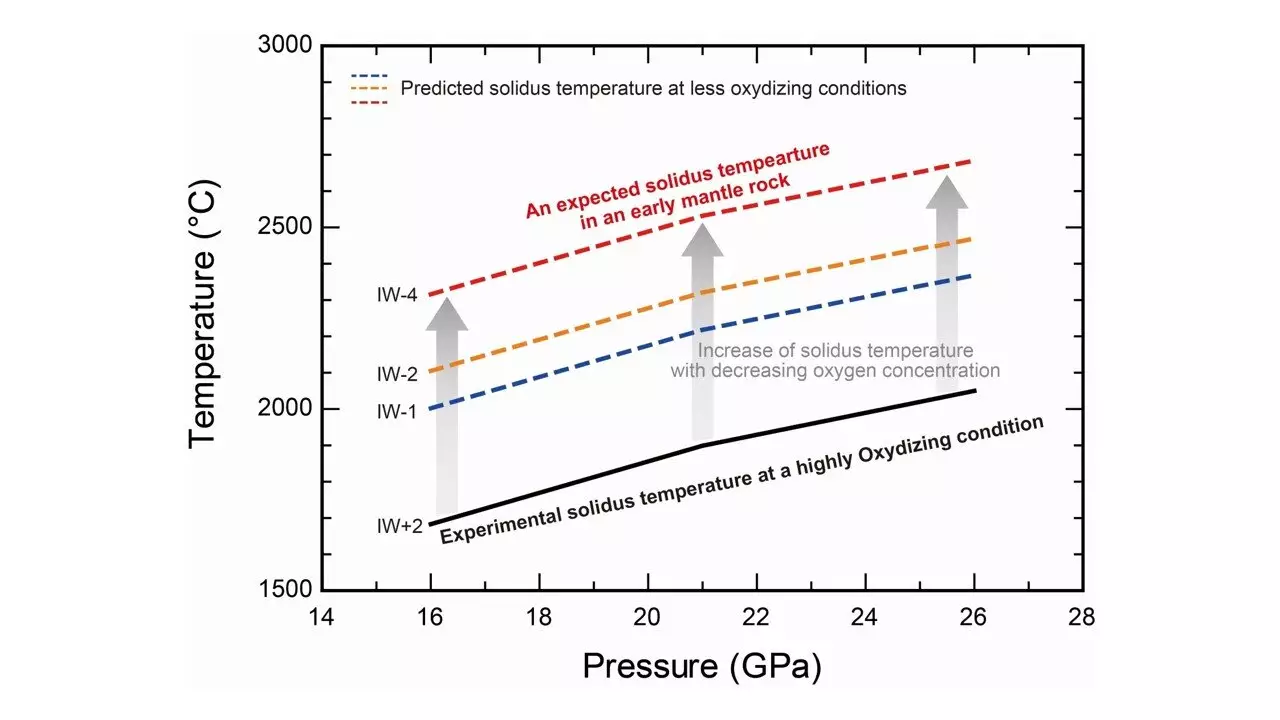The birth of Earth is a tale woven with fiery threads, where molten magma defined the planet’s infancy. In its early days, our world was engulfed in a vast ocean of magma, a result of the hellish temperatures arising from myriad celestial impacts. These primal events, involving numerous colliding bodies, pushed Earth into a state of extreme heat and turbulence. Understanding the processes that led to this molten phase is essential for piecing together Earth’s geological history and its subsequent evolution.
For years, scientists have churned through various models attempting to explain how this magma ocean formed and how it influenced Earth’s structural development. However, a persistent issue at the heart of these models is the uncertainty surrounding the melting temperatures of deep mantle rocks. Traditional assumptions regarding these temperatures are now being challenged, especially considering new experimental evidence suggesting potential discrepancies of 200-250 °C from previous beliefs.
The Intricacies of Oxygen Fugacity
A significant factor contributing to the melting process lies in the concept of oxygen fugacity, which refers to the availability of oxygen within the mantle. This parameter plays a critical role in determining how and when rocks melt under immense pressure and temperature. Some recent studies have indicated that the oxygen fugacity increases dramatically during Earth’s formative stages, particularly during the accretion of material and the development of the core. Yet, the precise implications of this increase for melting temperatures in deep mantle materials remain elusive.
Investigating this relationship, a research team led by Associate Professor Takayuki Ishii from Okayama University, alongside Dr. Yanhao Lin from the Center for High Pressure Science and Technology Advanced Research, embarked on a crucial study. Their objective was to ascertain how variations in oxygen fugacity affected the melting characteristics of deep mantle rocks, thereby shedding light on the conditions that prevailed beneath the potentially vast magma ocean during Earth’s formative years.
Experimental Findings and Implications
To achieve their goal, the researchers conducted a series of melting experiments mimicking deep mantle conditions, specifically at pressures between 16 and 26 Gigapascals—akin to depths of 470 km to 720 km within the Earth. By operating under high oxygen fugacity conditions, they utilized mantle pyrolite, a representation of Earth’s mantle composition. Their findings underscored a significant trend: as oxygen fugacity increased, the melting temperatures of the mantle materials dropped considerably—by at least 230-450 °C—compared to lower oxygen fugacity conditions.
This lower melting temperature, when translated into geological terms, indicates that the depth of the magma ocean’s floor could have been approximately 60 km deeper for each logarithmic unit increase in the mantle’s oxygen fugacity. Such results are potent, implying that previously held models of early Earth’s thermal evolution, as well as core formation theories, necessitate a thorough re-evaluation.
Moreover, the implications extend beyond Earth, as these findings might also inform our understanding of rocky exoplanets that could support life. Dr. Lin highlights the broader impact this research holds; by grasping the melting principles influenced by oxygen fugacity, scientists can form better hypotheses regarding the geological pasts of other terrestrial planets in our universe.
The evidence brought forth by Ishii and his colleagues marks a pivotal point in our understanding of Earth’s early formation. The pronounced influence of oxygen fugacity on the melting temperatures of deep mantle materials reveals a gap in conventional models, urging a reassessment that could reshape our comprehension of Earth’s geological narrative. As researchers continue to uncover the intricacies of Earth’s formation, the enlightening discoveries aid not just in interpreting our own planet’s history but also in exploring other planets that reside in the vast cosmos, enriching the dialogue about planetary formation and the conditions necessary for life.


Leave a Reply